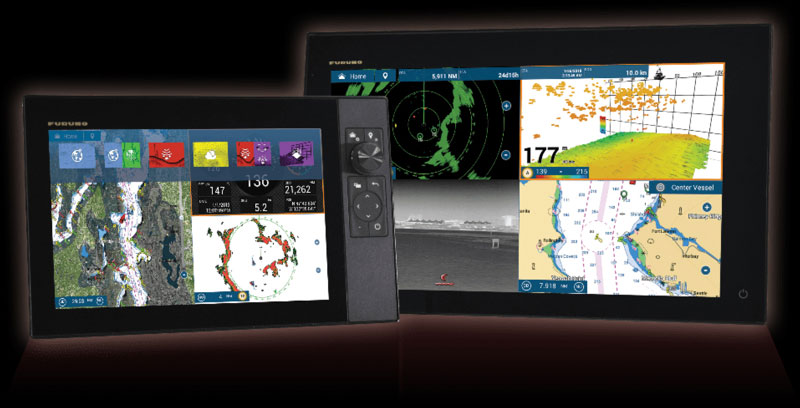Sure, a fishfinder can help you catch more fish. But, so can a slew of additional electronic accessories, if you start applying these tactics using:

Chartplotter Fishing Tips
Chartplotters are right up there with fishfinders when it comes to boosting your catch rate. Most anglers already realize that they should hit the MOB button the moment they have a strike, so they can return to the exact same spot over and over again. But many people fail to fully utilize this function when they don’t zoom their chartplotter in all the way. Zoomed out to a mile or two, much less to the wide range you used for navigating to the area in the first place, the on-screen boat icon will be the size of a 1000-foot ship relative to chart scale… and you might be 1000 feet off your mark even though you appear to be hitting it on-screen. Zoom in as tight as possible, to see the exact location of your marks as they relate to your boat’s position.
If your chartplotter is five or fewer years old, you may be able to create your own bathymetry charts. Most modern systems can combine the pings of the fishfinder with GPS coordinates to redraw bottom contours and structure locations. Learning how to set up the system to accomplish this may take some time, but if you have the capability check it out. We “remade” charts of a very well documented area (Thomas Point) as an experiment and found plenty of discrepancies in the existing mapping on the chip — including a few contour lines far enough out of kilter to change where we thought we wanted to fish.
Using AIS (Automatic Identification System) for Fishing
AIS is the system that, by international agreement, is in service on all commercial vessels. It broadcasts their port of destination, course, speed, cargo or activity, and many other details. The Coast Guard sees this as a great tool for collision avoidance and safety. We see it as a great new way to catch more fish. Bay anglers can look at AIS to find out when and where commercial vessels are at anchor. Locate one that’s anchoring overnight, and you may have just found a honey hole. Those big commercial ships are required to have deck illumination all night long, and when you splash light all over the place in an otherwise dark bay, you attract fish. Often, those fish will hang around the area during daylight hours.
Offshore anglers will want to pay attention to AIS to learn when and where scallopers, draggers, and squid boats are off the coast. You can sometimes discover a tuna bite around scallopers or draggers, and when a squid boat is in the area you know there’s plenty of bait in that zone.
Note: If you don't have AIS at the helm, simply reach for your cell phone. Apps like Vessel Finder allow you to tap into the data for free.
Radar Fishing Tips
Most people know they can use radar to find fish by finding birds. This tactic can work, though in many areas of the Chesapeake a crowd of boats can make it difficult or impossible to tell the difference between the boats and our feathered friends. Radar can be even more helpful, however, in determining where not to fish. If you’re about to make a run to a known hotspot, first fire up the radar and take a peek. If you spot one of those big fleets, you may want to head for an area with a bit less pressure.
See Electronic Countermeasures for a few more tips on how electronics can be harnessed to help you catch more fish.